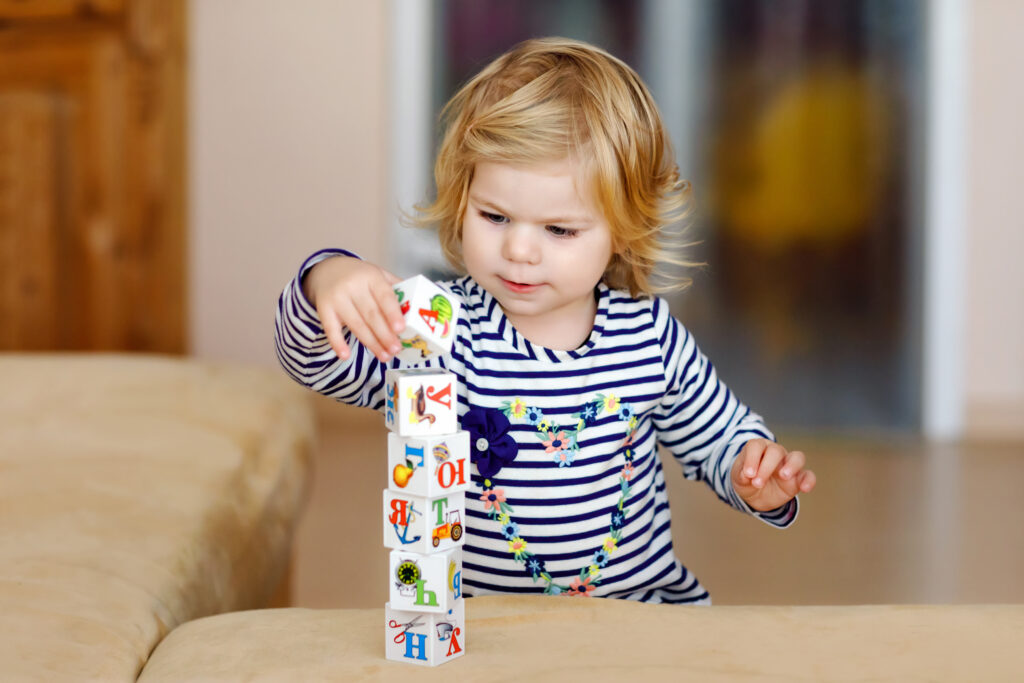Stacking Blocks: What is the Developmental Significance?

From the earliest stages of infancy to the formative years of toddlerhood, stacking blocks represents more than just a playful activity. It serves as a cornerstone in the developmental journey of children, offering insights into their cognitive, motor, and social growth. So, let’s explore the fascinating milestones associated with stacking blocks and why they matter in childhood development.
Early Foundations: Exploring Shapes and Textures
Firstly, for infants and young toddlers, stacking blocks begin as a sensory exploration:
- Grasping and Manipulation: Initially, infants grasp blocks to explore their textures, shapes, and sizes, developing fine motor skills and hand-eye coordination.
- Cause and Effect: Knocking down stacked blocks introduces basic concepts of cause and effect, stimulating curiosity and early problem-solving skills.
Cognitive Milestones: Spatial Awareness
Then, as children progress, this activity evolves into a more intentional cognitive challenge:
- Spatial Skills: Arranging blocks to fit together requires spatial reasoning and understanding of shapes, sizes, and dimensions.
- Planning and Sequencing: Building taller structures involves planning and sequencing actions, promoting logical thinking and concentration.
Stacking Blocks Helps Motor Development
Stacking blocks is a tactile experience that refines motor skills, fine-tuning coordination and control:
- Precision and Control: Balancing blocks and carefully placing them enhance fine motor skills, fostering dexterity and finger strength.
- Hand-Eye Coordination: Aligning blocks and stacking them vertically improves hand-eye coordination and spatial precision.
Social and Emotional Growth: Collaboration and Persistence
In addition to cognitive and motor skills, block play encourages social interactions and emotional development:
- Collaborative Play: Sharing blocks and building together fosters teamwork, communication, and negotiation skills.
- Persistence and Resilience: Overcoming challenges, such as unstable structures or collapsed towers, teaches patience, perseverance, and emotional resilience.
Milestones for Stacking Blocks
- Infancy (0-12 months): Grasping and exploring blocks, beginning to knock down stacked towers.
- Early Toddlerhood (12-24 months): Experimenting with stacking blocks vertically, developing basic building skills.
- Late Toddlerhood (24-36 months): Building taller structures, sorting blocks by size or color, and engaging in more complex imaginative play.
Encouraging Block Play: Tips for Parents and Caregivers
- Provide Varied Blocks: Offer blocks of different shapes, sizes, and textures to stimulate exploration and creativity.
- Join in the Play: Participate in block play to model skills, encourage interaction, and celebrate achievements.
- Create Safe Spaces: Ensure a safe environment for stacking and building activities, allowing children to explore and experiment without constraints.
Stacking blocks is not merely a pastime but a pivotal developmental milestone that supports children’s cognitive, motor, social, and emotional growth. Therefore, as they engage in block play, children hone essential skills that lay the foundation for future learning and problem-solving abilities. Finally, by recognizing the significance of stacking blocks in childhood development and nurturing these skills through play, parents and caregivers empower children to explore, create, and thrive in a world of endless possibilities.
